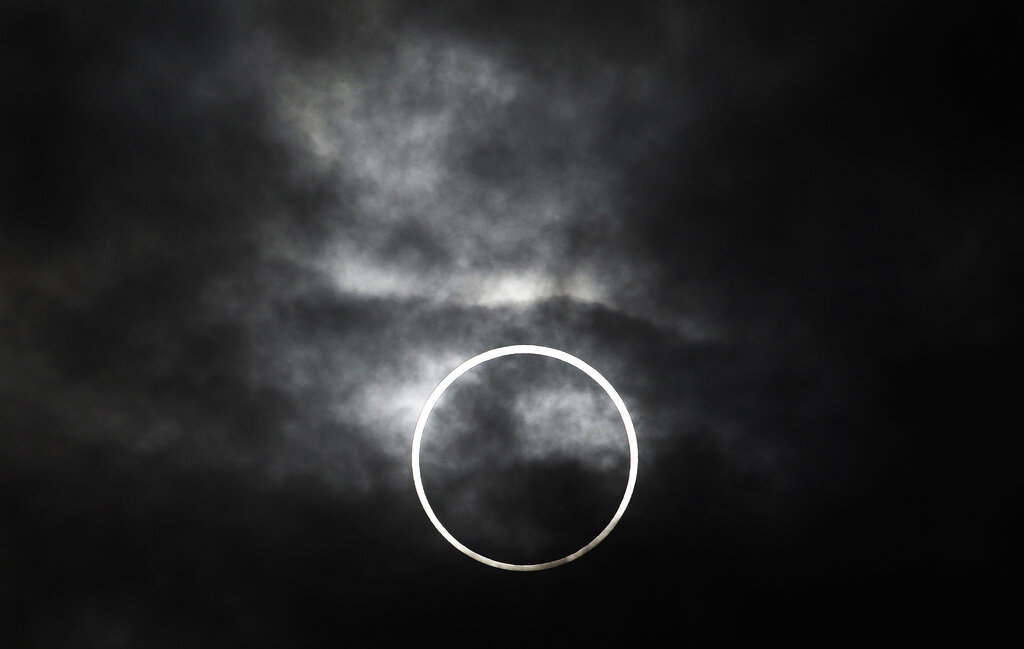An annular solar eclipse is visible from Machida, on the outskirts of Tokyo, Monday, May 21, 2012. The annular solar eclipse, in which the moon passes in front of the sun leaving only a golden ring around its edges, was visible to wide areas across the continent Monday morning. (AP Photo/Itsuo Inouye)
LOGAN – For the first time since 2012 an annular eclipse will be viewable from Utah and Utah State University is inviting everyone to come to the USU Quad Saturday morning for the event.
USU’s College of Science and Space Dynamics Lab have organized the viewing.
James Coburn is coordinator of the USU Conservatory and lab supervisor in USU’s Department of Physics.
“With an annular eclipse, the moon is a little further away,” Coburn said. “If you remember a couple of weeks ago we had a super moon, a full moon. It was close. Well it takes it two weeks and it is on the other side of its orbit; it’s now the furtherest away. So it’s a little smaller than the sun, so it won’t quite cover up the sun.”
Coburn said events on the quad Saturday morning will run from 8 a.m. until noon; the eclipse will be 9 a.m. to noon.
“But there will be some booths set up with some things you can make: a pinhole projector to look at the eclipse safely, or there will be some eclipse glasses and some telescopes and so you could look at the sun safely through these telescopes with special filters on them, and the eclipse glasses, and other ways you will be able to do that all morning. If we can see the sun, we’ll be looking at it.”
Coburn said weather permitting the eclipse will be most visible between 10-11 a.m.
Experts have issued a warning that this event could pose a danger to your eyes. To view the eclipse people should wear special glasses with lenses designed to protect vision.
USU volunteers will offer a limited number of eclipse glasses for guests.

